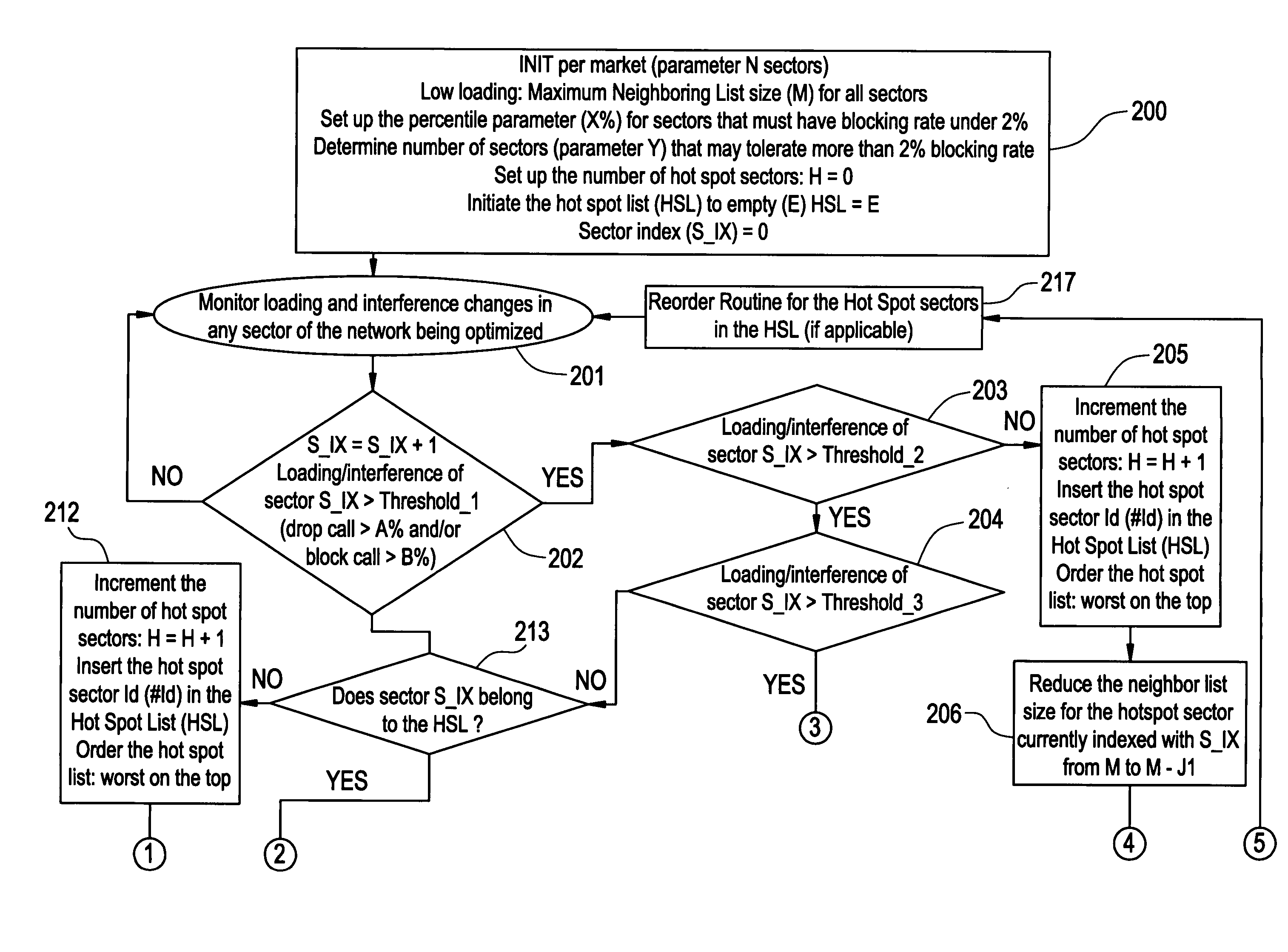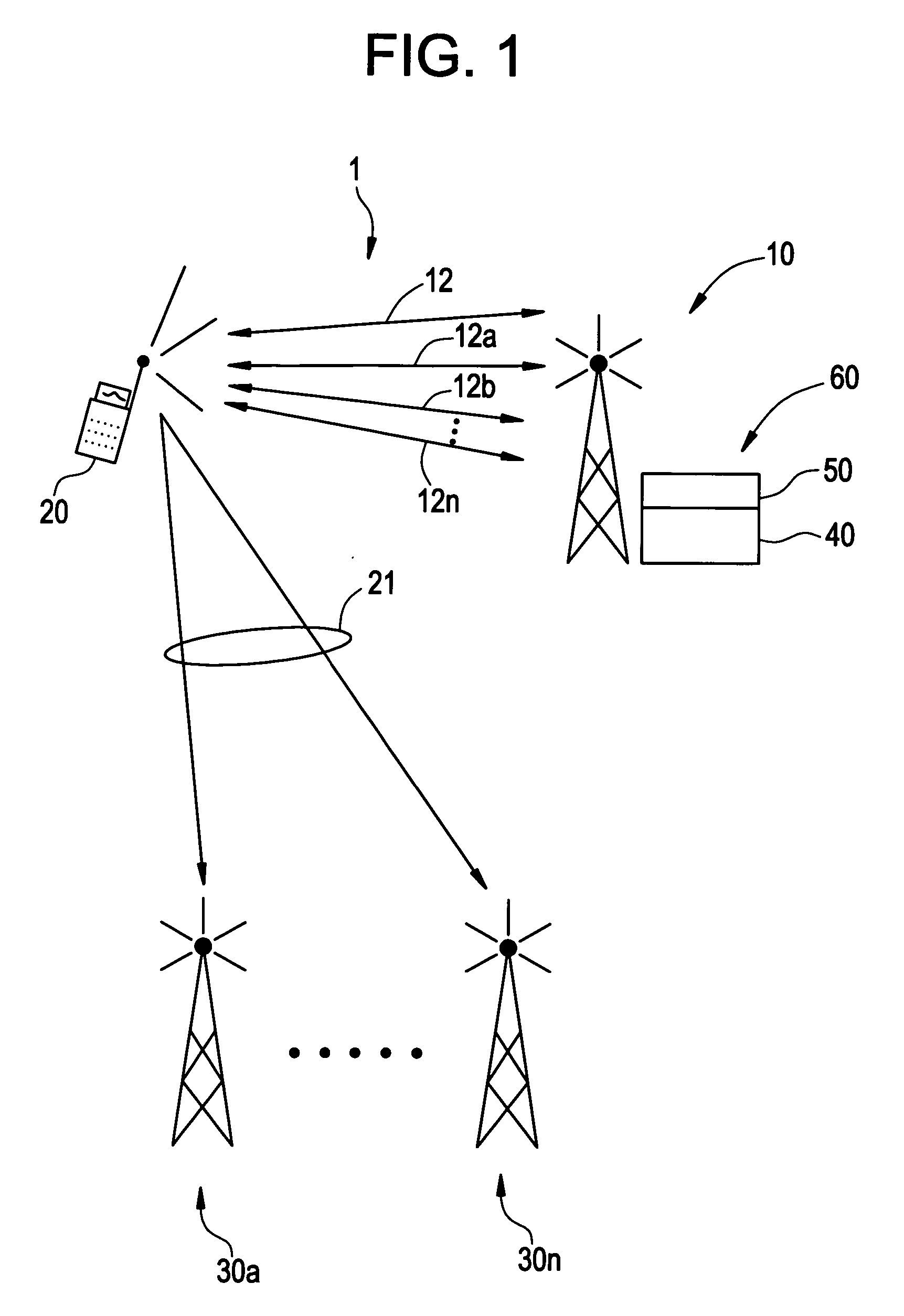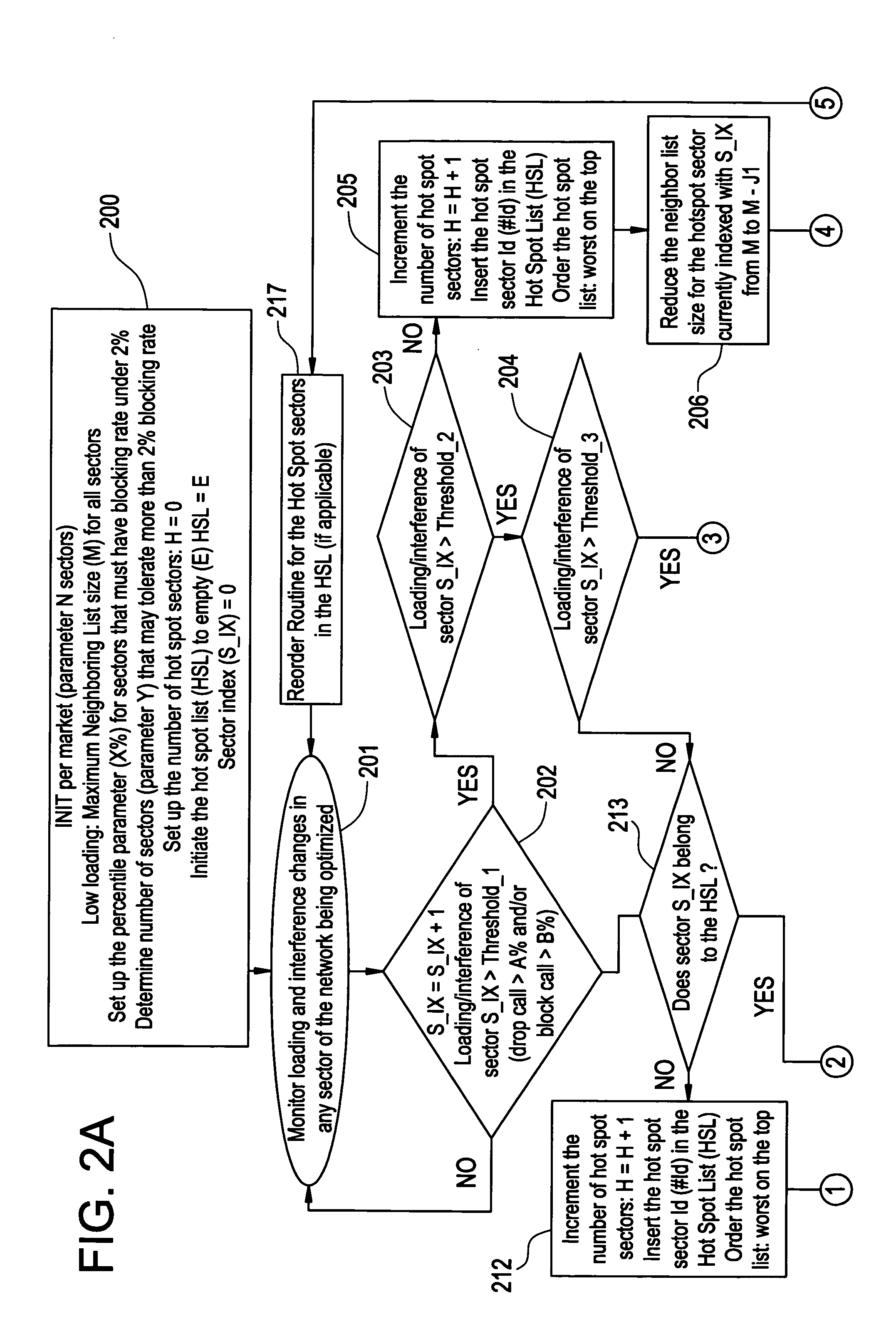Methods and devices for varying a hand-off base station list based on traffic conditions
- Summary
- Abstract
- Description
- Claims
- Application Information
AI Technical Summary
Benefits of technology
Problems solved by technology
Method used
Image
Examples
Embodiment Construction
[0013] Referring now to FIG. 1, there is shown a wireless network 1 comprising a wireless or mobile device 20 (collectively “wireless” device), current serving base station 10 for the wireless device 20 and one or more potential hand-off base stations 30a, . . . 30n (where “n” indicates the last base station). Though only one wireless device 20 is shown in FIG. 1, it should be understood that a typical wireless network may comprise tens, hundreds, or thousands of such wireless devices. FIG. 1 also shows pathways 12a, 12b, . . . 12n between wireless device 20 and base station 10. Depending on the type of wireless technology (e.g., Code Division Multiple Access (CDMA), Time Division Multiple Access (TDMA)) implemented in system 1, device 20 may be served by one (in the case of a TDMA system) base station via pathway 12a or more (in the case of a CDMA system that uses soft hand-offs) base stations via pathways 12b, . . . 12n.
[0014] In one embodiment of the present invention, base stat...
PUM
 Login to View More
Login to View More Abstract
Description
Claims
Application Information
 Login to View More
Login to View More - R&D
- Intellectual Property
- Life Sciences
- Materials
- Tech Scout
- Unparalleled Data Quality
- Higher Quality Content
- 60% Fewer Hallucinations
Browse by: Latest US Patents, China's latest patents, Technical Efficacy Thesaurus, Application Domain, Technology Topic, Popular Technical Reports.
© 2025 PatSnap. All rights reserved.Legal|Privacy policy|Modern Slavery Act Transparency Statement|Sitemap|About US| Contact US: help@patsnap.com



